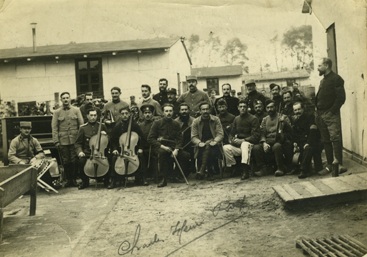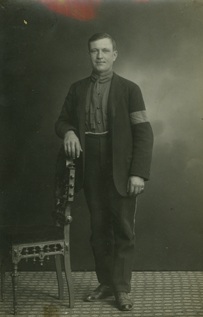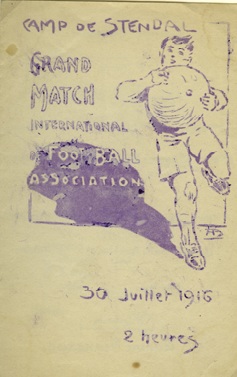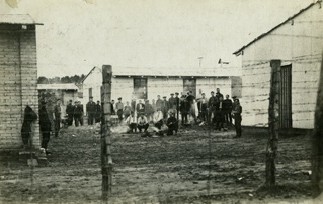
From the Sault Ste. Marie Public Library archive:
*************************
As we approach Remembrance Day we acknowledge the military service of our veterans (and current military personnel).
One of the dangers they encounter is the threat of capture by the enemy and being sent to a Prisoner of War camp.
Local soldier Thompson Edwin Durham was injured on the battlefield in 1915.
 He was found by a German officer and transferred to a hospital.
He was found by a German officer and transferred to a hospital.
After recovering in the hospital, Durham was moved to a Prisoner of War camp at Stendal, Germany, about 90 miles west of Berlin.
Upon arrival, prisoners were issued a prison uniform, supplied by the Red Cross.
This uniform was black with brown stripes down the legs and a brown insert in the sleeves of the jacket.
At this camp, the men were well treated, although frequently, rations were in short supply, especially near the end of the war.
The daily meals at the camp consisted of black bread and soup, so the men depended on packages from home and from the Red Cross for additional food, money, and supplies.
New arrivals at the camp would be paired up with someone who had been at the camp for a while and they would share their parcels until the new arrival began to receive their own packages.
Prisoners were expected to work both inside and outside of the camp.
During Thompson Edwin Durham’s incarceration at the POW camp, he worked as an electrician.
Some of the other prisoners were billeted with farm families.
Other prisoners were not so fortunate in their work assignments and were sent to work in the salt mines.
This would have been very dangerous and difficult work.
To keep the men occupied and “happy” during their imprisonment, the Germans in charge of the camp organized activities for the prisoners.
This included concerts, debating clubs, orchestras, plays and sports teams.
During his time at the camp, Durham was able to take cello lessons in exchange for providing English lessons.
 Unfortunately, war often meant that pets were displaced and left wandering the countryside.
Unfortunately, war often meant that pets were displaced and left wandering the countryside.
The men at the Stendal POW camp found a black cat and adopted it as their camp mascot.
They gave the cat and her five kittens a home in their barracks.
After the Armistice took effect on November 11, 1918, finally ending the First World War, the camp was visited by Canadian officers who arranged for the transportation of the men back home.
Durham boarded a train from Germany to Copenhagen where he then boarded a ship, The Ajan.
Arriving in Scotland on January 1, 1919, the returning soldiers were piped ashore, given a good meal, a new uniform, some pay and three months of leave.
Durham finally arrived in Halifax on May 9, 1919 and was discharged in Toronto on May 11.
He travelled home to Sault Ste. Marie that same day.
Following the end of the First World War, memorials to those who died and served in the war sprang up across Canada.
In Sault Ste. Marie, the citizens erected the Veterans War Memorial on Gore Street, the Cenotaph in front of the courthouse, memorial cairns at the locks and at the Abitibi Pulp and Paper Company.
*************************
Each week, the Sault Ste. Marie Public Library and its Archives provides SooToday readers with a glimpse of the city’s past.
Find out more of what the Public Library has to offer at www.ssmpl.ca and look for more Remember This? columns here.
